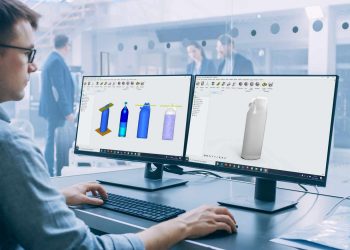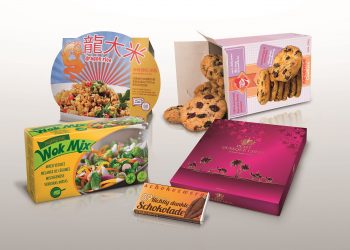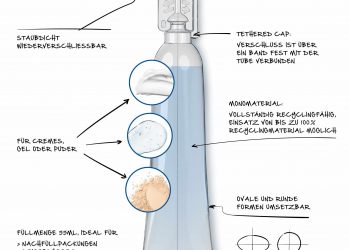Takeaway packaging for any restaurant across the world needs special attention as every brand is trying to transport the same experience of the restaurant in a box. When asked, a restaurant owner in Bengaluru on-
Why opting for Swiggy or Zomato despite their heavy margins and lesser consumer experience?
– “50% of my order comes from Swiggy and Zomato”
Now, Cloud kitchens have also been sprouting in India which has also increased the demand for packaging for food delivery. The major challenge with this model is the restaurant has to build the brand without a physical store which gives interesting opportunities for packaging to innovate. In addition, COVID-19 has been a blessing in disguise for the food-tech industry.
The profitability of cloud kitchen heavily relies on the efficiency of preparing and packaging the food in minimal time per order as the average order quantity ranges from 300-400 per day. The packaging should suit the face-paced kitchen style and have inbuilt features to tackle the nitty-gritty of the entire supply chain that is from warehouse to kitchens to the consumer.
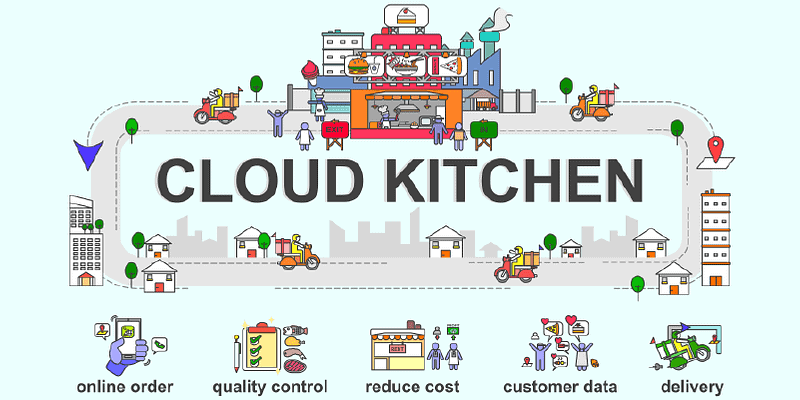
Additional Challenges to be Considered in Packaging Development for Cloud Kitchen
- A cloud kitchen is a delivery-only restaurant with no dine-in facility. Since the primary source of order-taking is through the internet, or cloud as they call it, there is no physical storefront for the customers. Packaging becomes the first and the most crucial touchpoint of branding for any restaurant to convey its message to consumers.
- The novelty is going as most restaurants on Swiggy or Zomato are cloud kitchens. Consumers are heavily relying on the rating and feedback posted on the apps.
- Formation of packaging should be >= 30 secs as avg per day order would be 300-400
- As multiple kitchens are running under the same premise. The inventory of packaging should be lean and have modularity to scale up with different food items.
Foundation of Designing the Packaging
The foremost part while designing the packaging is to understand the conditions and scenarios of every stop in the supply chain where the packaging will pass through.
With my personal experience and many Interactions with brand owners, we need to be mindful of setting realistic goals. It is not impossible to achieve perfect packaging but it always comes with the implication of cost and we need to keep in mind that the business model is to serve single-use packaging.
Delve on these 4 ideas
The factors I am sharing are from my experience working with multiple cloud kitchens. There are major 4 areas to understand and consider while choosing or designing the packaging.
1. PRODUCT
We have to understand what product(food) needs to be packed. There can be single or multiple items getting packed together. To carefully observe the consistency, geometry, and physical properties of the individual item so that an ideal environment can be designed.
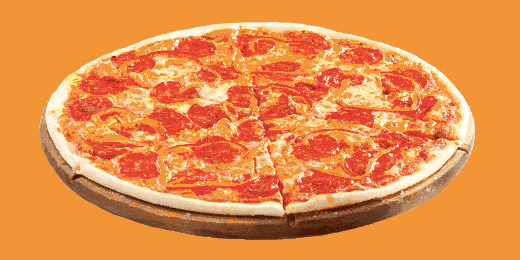
Adding pizza stool to restrict its movement inside the box
- Consistency: To understand the viscosity of the food item. The item might be dry, semi-dry, or gravy. Choosing the right packaging material to suit the type of food.
- Geometry: To build packaging considering the shape and size of the food item. For eg pizza can have various shapes like circular, rectangular or a slice.
- Physical Properties: To direct the physical attributes of the food item. In the case of pizza, a pizza stool is placed on the hottest and softest part to avoid any kind of movement and keep pizza intact in packaging.
2. KITCHEN
As mentioned above cloud kitchens have very faced paced dynamics. We need to design packaging which is very intuitive, can be pre-formed for quicker transfer of hot food and should nest or be in the collapsible condition in storage.
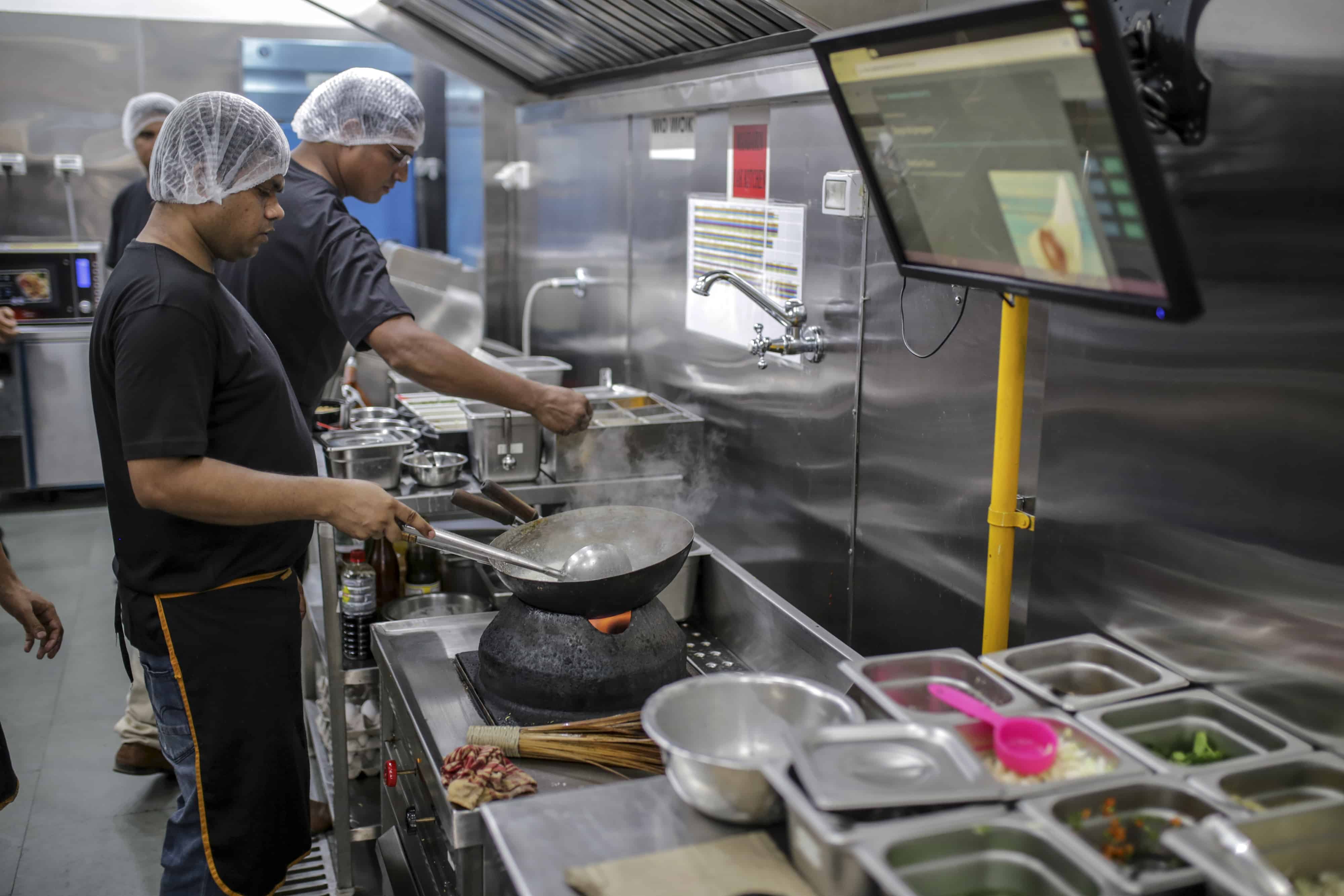
Kitchen scenario and space
- Staff on job: The working conditions can be stressful so the packaging needs to be very intuitive and in pre-form condition. The packaging should have a minimal SOP to avoid any confusion for the smooth running of the kitchen.
- Space Constraints: There are limited space and less storage space for packaging. Packaging should be collapsible or have nesting features to occupy lesser space.
- Filling line: Every food item requires proper storage conditions. Packaging should accommodate both hot and cold food items. For eg: Biryani is served hot but raita is pre-packed and stored inside the fridge. Packaging needs to maintain both the temperature well so that raita doesn’t taste sour.
3. CONSUMER EXPECTATIONS
All effort to entice the consumer and provide one perfect meal for them to remember by the brand. The consumer generally expects the same dine-in experience in the takeaway packaging but we have to be realistic that hot and warm food served fresh will always have a higher experience than online ordered food. We as designers can tackle this by understanding consumers’ emotional and functional expectations from packaging.
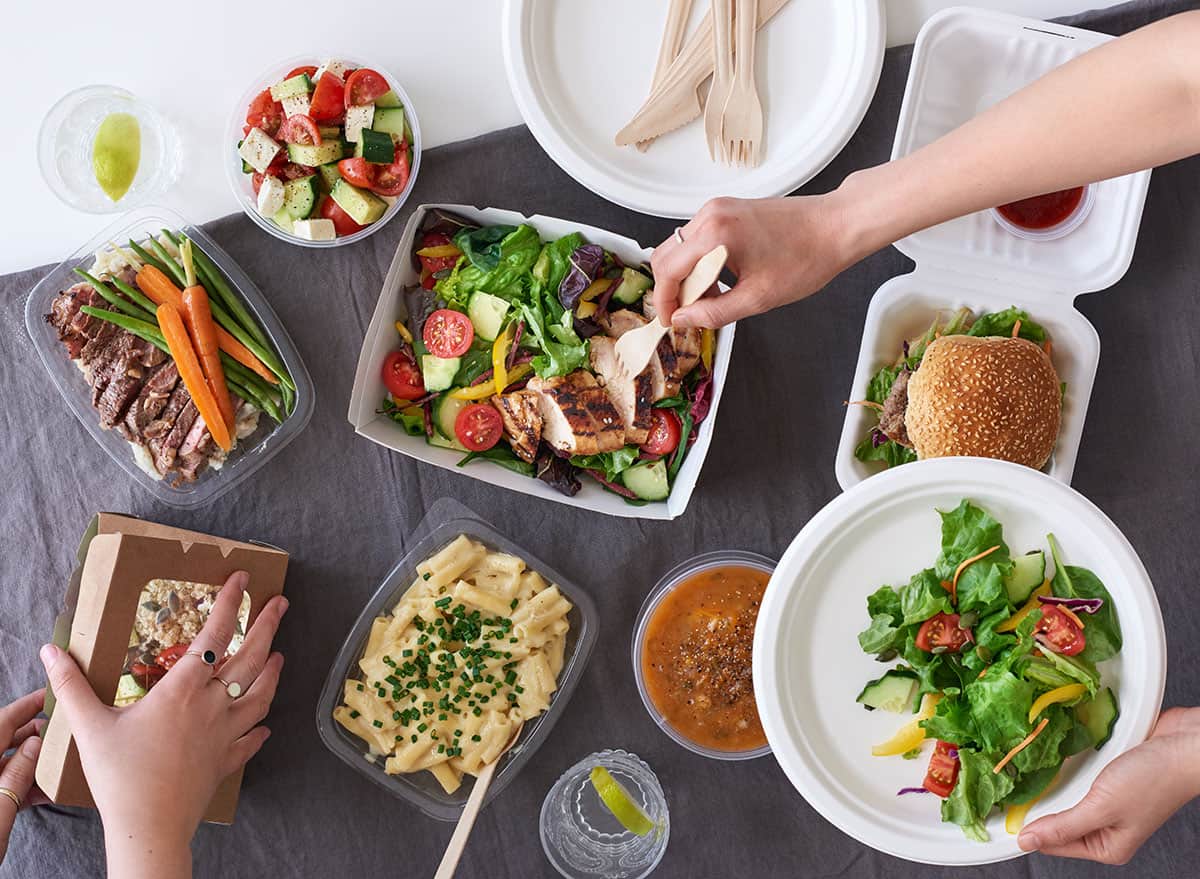
Experience driven packaging
- Emotional touchpoints: Branding Branding Branding! Should help consumers to connect immediately with the brand. The packaging should be in a presentable layout that keeps food items intact. Providing small interacting features for consumers to bond over the meal. For eg: Pizza hut developed a packaging that converts into a movie projector.
- Functional touchpoints: The packaging should be sturdy, spillproof, temperature resistant, food safety and hygiene, easy to dispose of, easy to open, easy to restore and ecofriendly.
4. DELIVERY METHOD
Generally, road conditions in India are not that great. There are a lot of bumps that packaging needs to survive. There have been concerns related to packaging mishandling by delivery guys. This is the toughest milestone to crack as all the experience depends upon how safe is your packaging for transit.
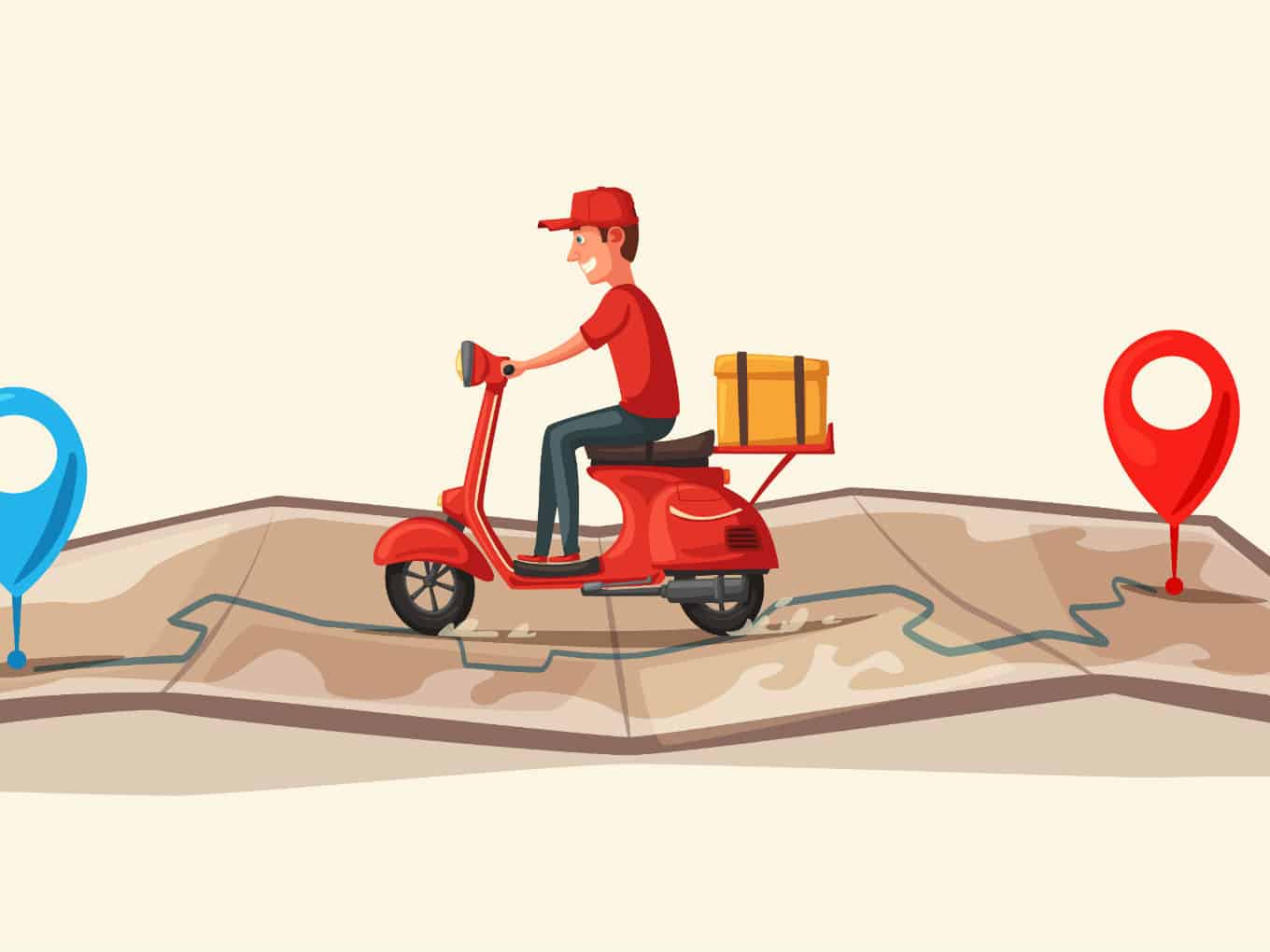
Delivery of food through online order
- Delivery Bags: Mostly an insulated delivery bags are given which keeps the packaging intact at one place but often because the bags take much space on a two-wheeler, delivery guys prefer carrying a rucksack for delivery. These bags do not have space so delivery guys keep packaging vertical which may result in distortion of food items.
- Road conditions: Because of bumps and potholes optimal headspace helps in avoiding food items stick on the lid of the packaging.
Most of the factors are similar to any food delivery packaging. But some of the crucial points are very specific to cloud kitchen scenarios. While designing keep recircling on providing the most functional yet economical option as it is a single-use packaging. We should also keep the intention to choose/provide the most sustainable option.
I'm an Industrial Designer with a specialization in Structural Packaging Design and Research.
Over the past 9 years, I have had the opportunity to work with multiple renowned brands, startups and have also collaborated with independent brands to conceptualize, mentor and implement innovative design strategies for their packaging.
As I am venturing into the packaging subject deeper and interacting with multiple stakeholders from concept to execution, I am learning to work on simple approaches and devising tools based on logical thinking which can make the design process enriching.


